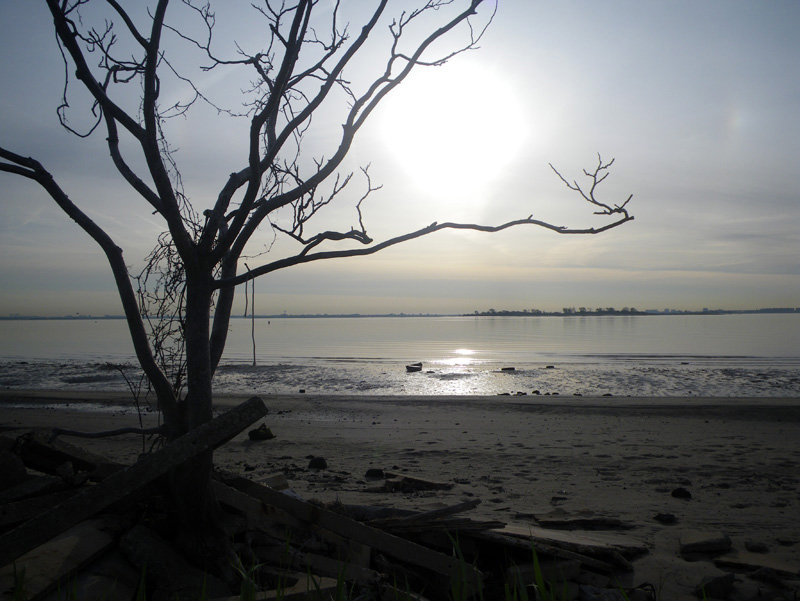
“As far as map ideas go, maybe we could map where a certain plant or animal grows in New York City.” said Adrian Shirk.
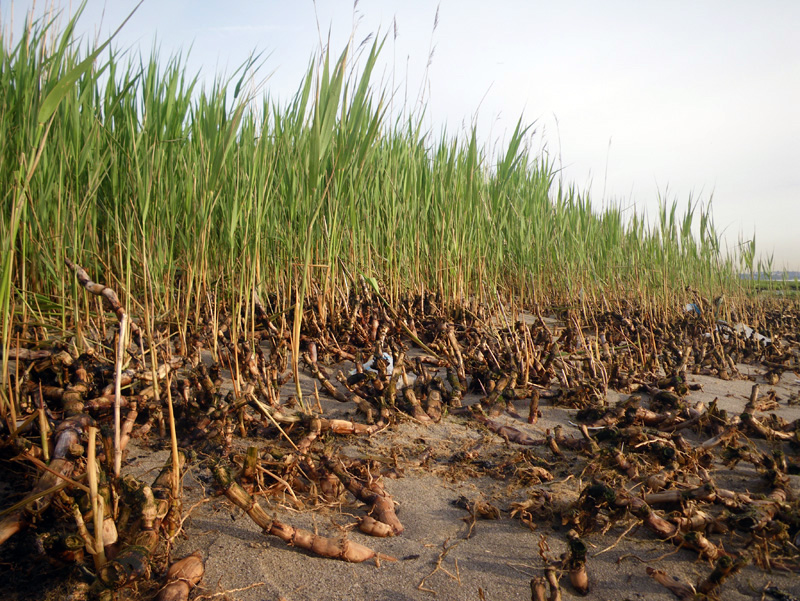
I wanted to make a map of phragmites australis, a common reed that grows all over Jamaica Bay,
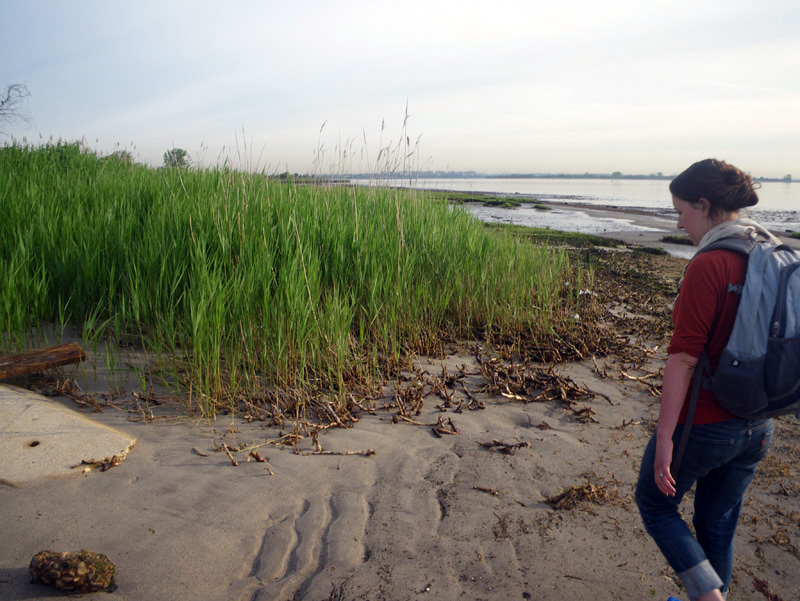
but upon arrival, we started seeing a creature much stranger than the phragmites.
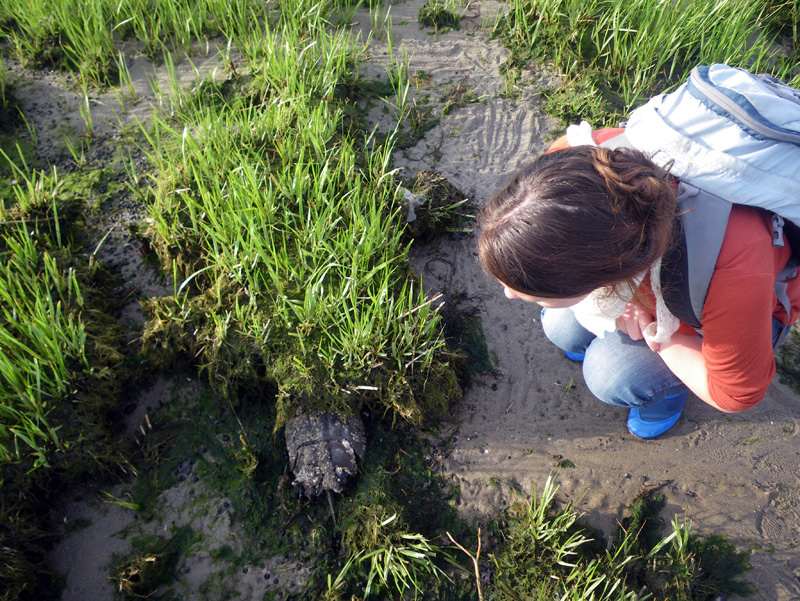
Not only were there horseshoe crabs all over the beach,
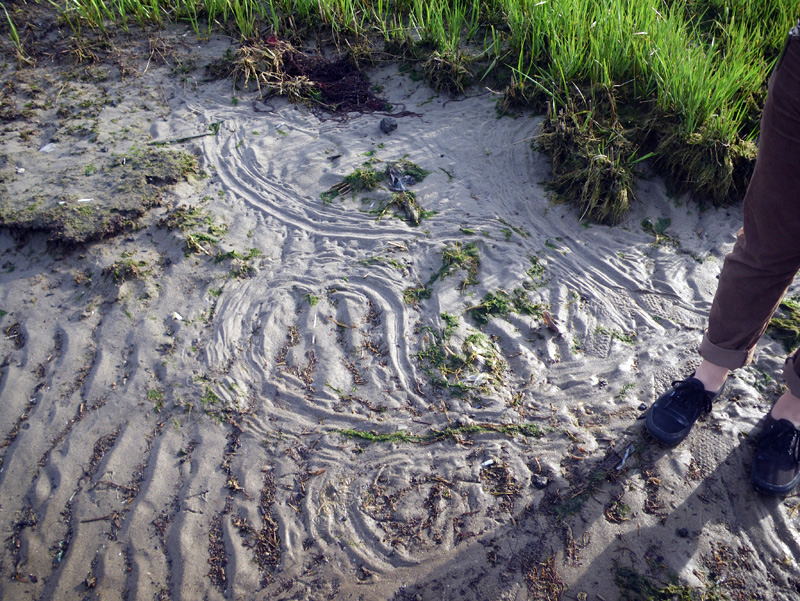
but they were in the process of making their own maps.
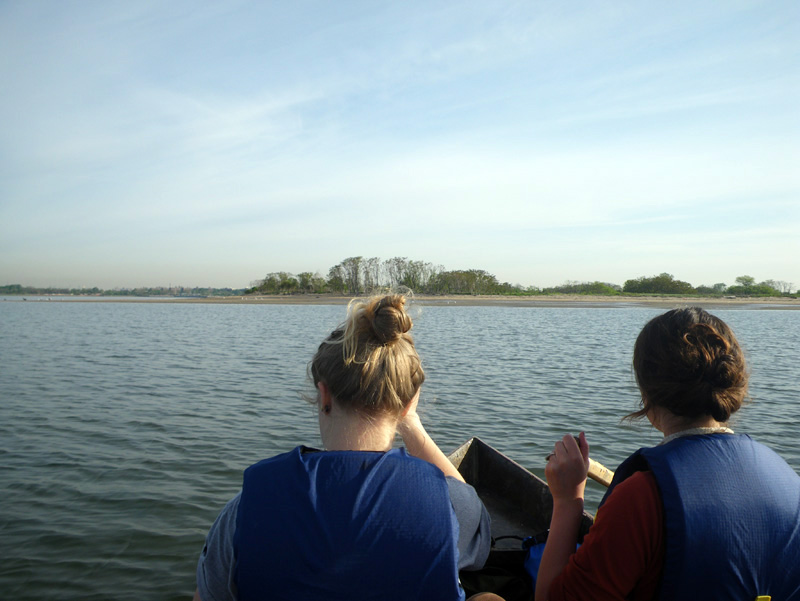
We set out across the bay to Canarsie Pol,
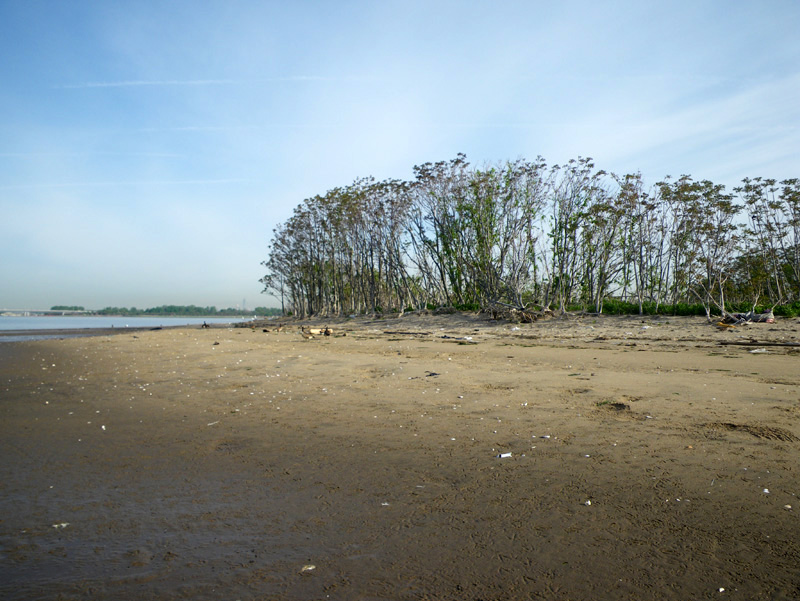
one of the largest ilsands in the wildlife refuge.
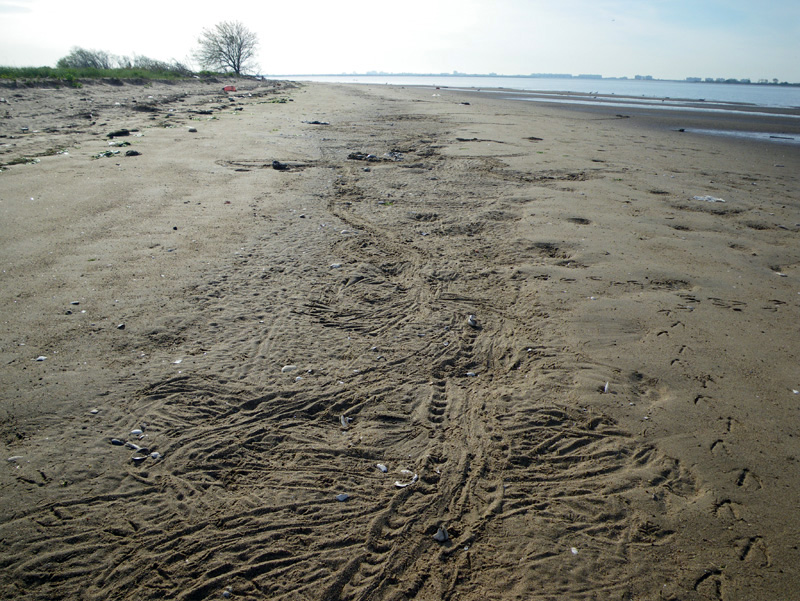
The tide was way out, and the entire beach was carved with patterns made by horseshoe crabs.
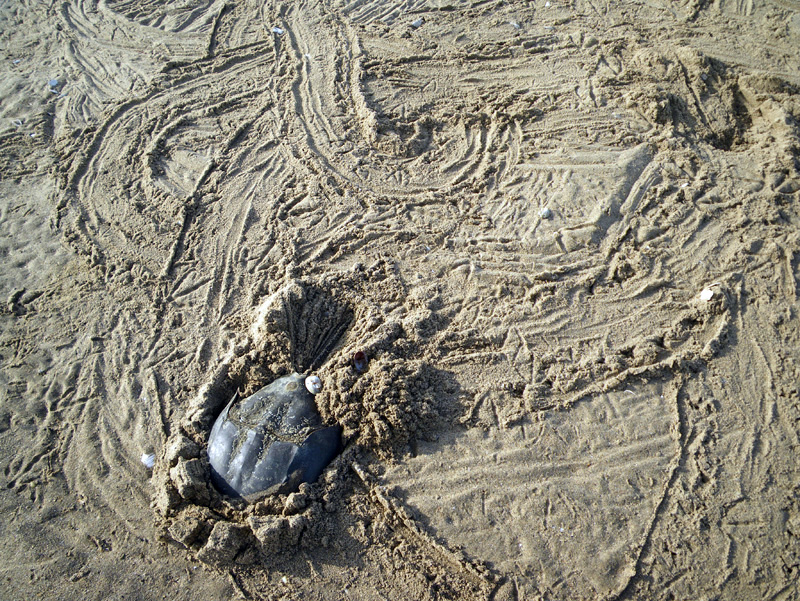
On early summer nights, especially when the moon is full, the horseshoe crabs come ashore by the thousands to breed.
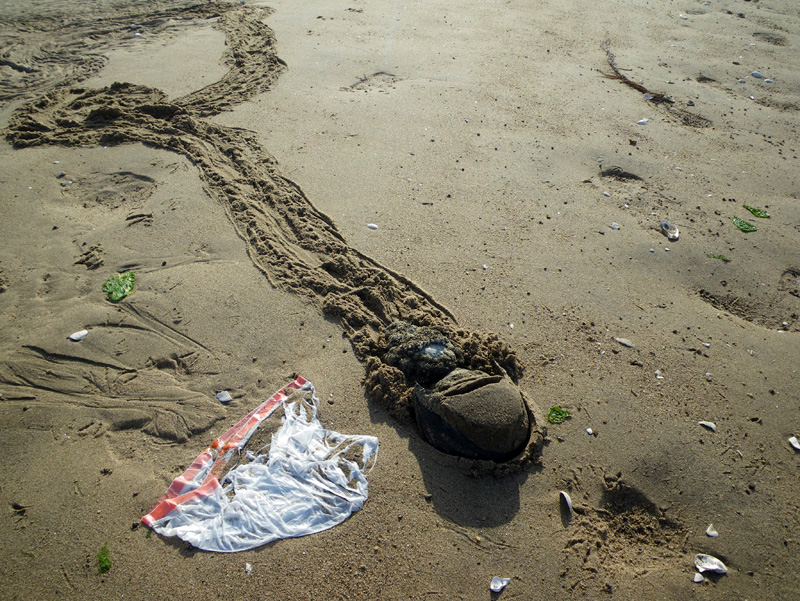
The female digs along and lays her eggs in the sand. The male attaches to her body and fertilizes the eggs as they pass.
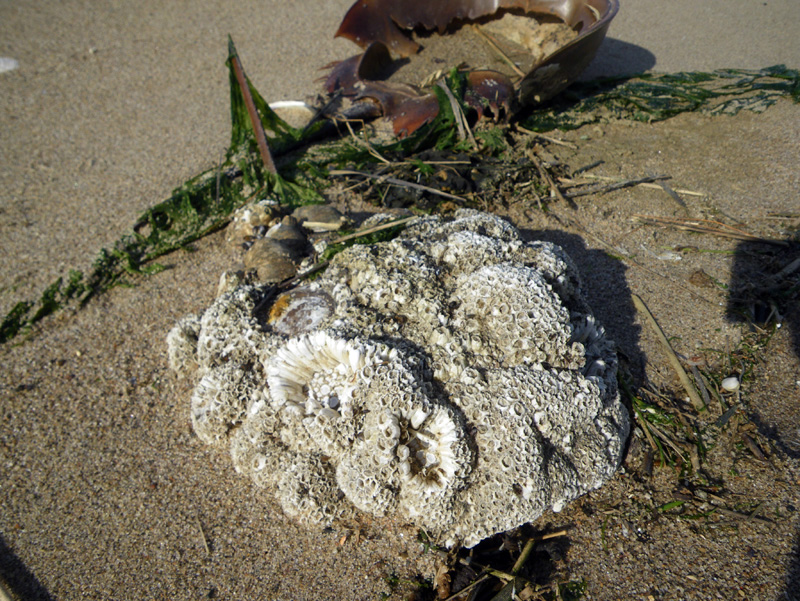
The horseshoe crab is considered a ‘living fossil’. It’s relatives, almost identical in shape, are found in strata from the Ordovician period, 450 million years ago.
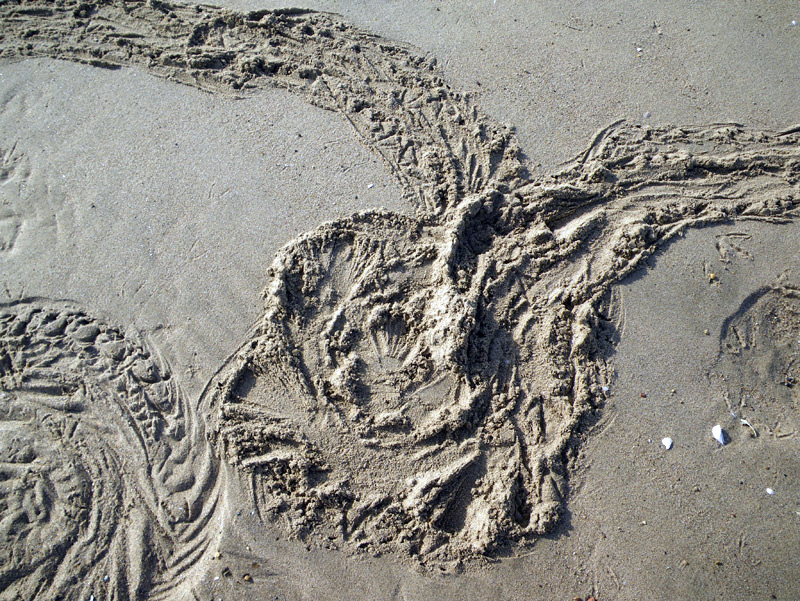
We had missed the main event though. Most of the horseshoe crabs came ashore the night before to breed.
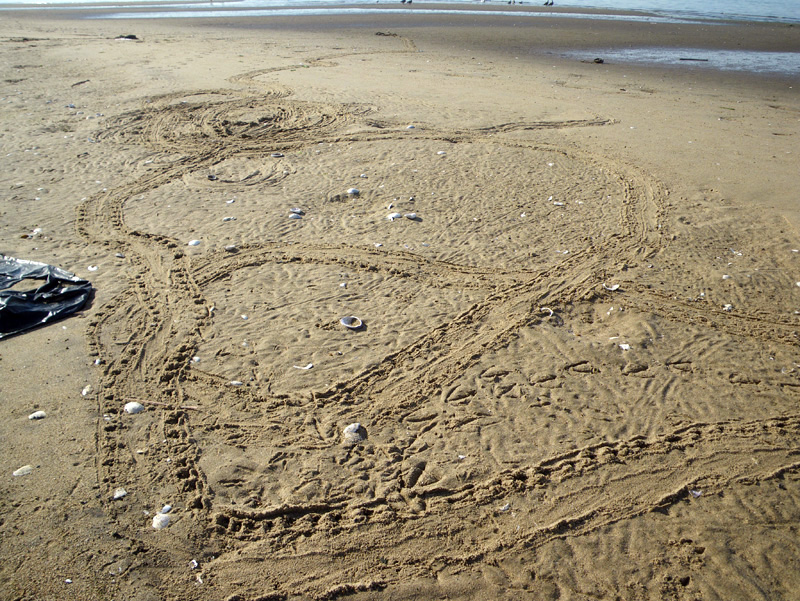
Seeing the beach cut through with their trails was like walking in the wake of a mardi gras parade.
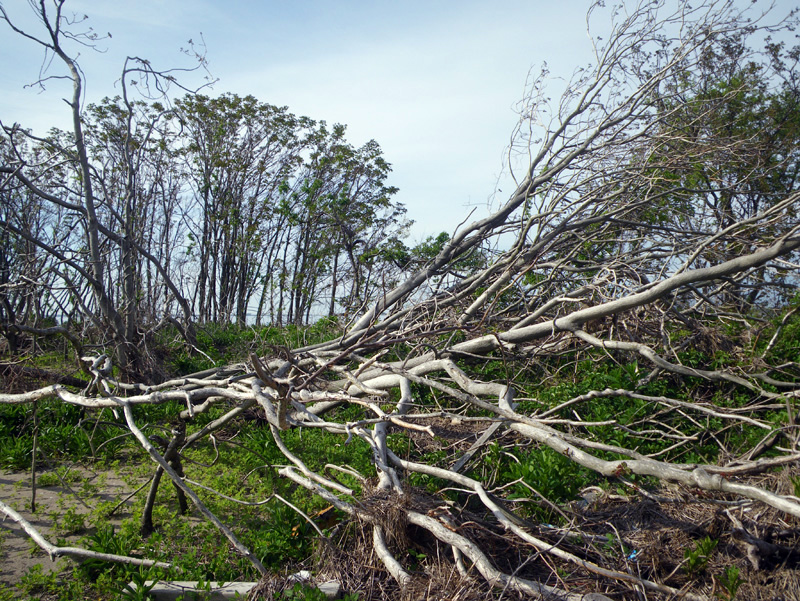
As we circled the island, we could see evidence of Hurricane Sandy’s tidal surge.
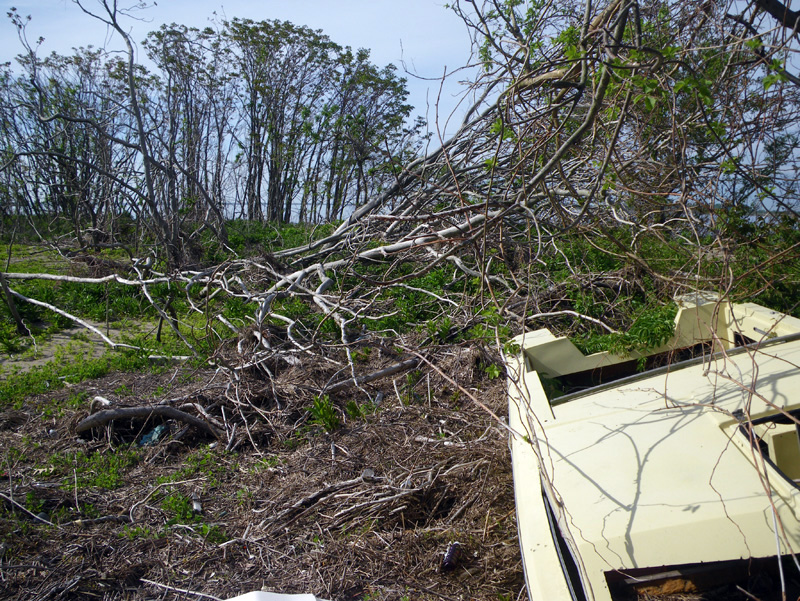
It’s hard to tell in this picture, but a large stand of trees had been pushed over,
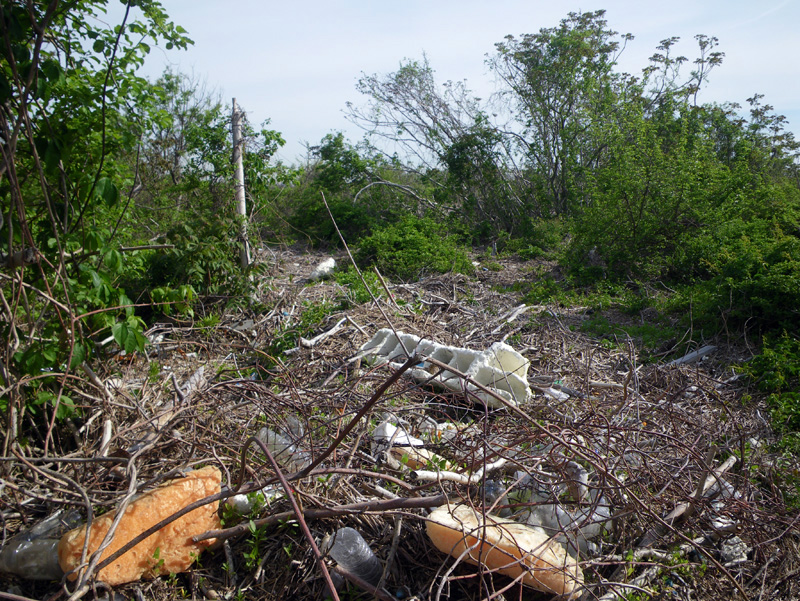
and directly to the northwest lay a huge drift of plant matter, garbage, and boats. It seemed like the drift broke down the trees during the surge.
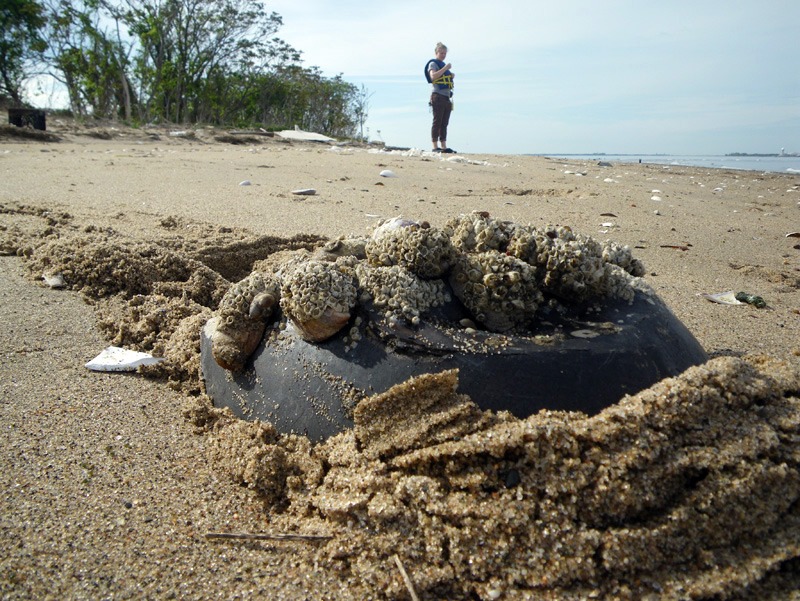
The living fossils didn’t seem to mind,
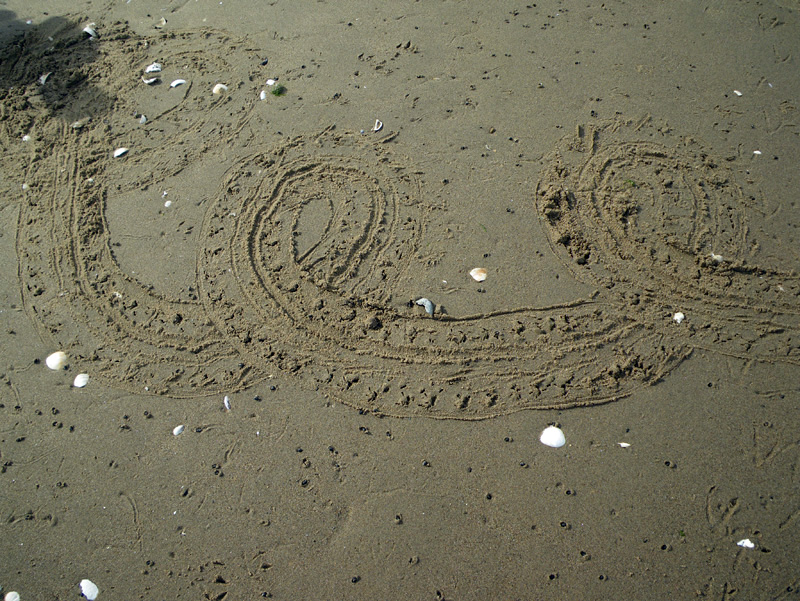
and we studied their strange messages in the sand.
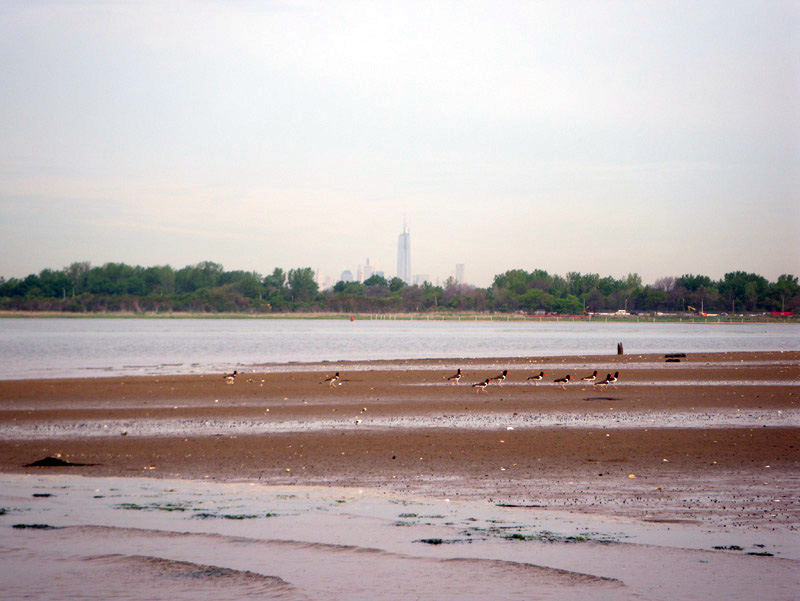
Jamaica bay is a great place to observe the struggle of matter, a contstant dance of destruction and regeneration.
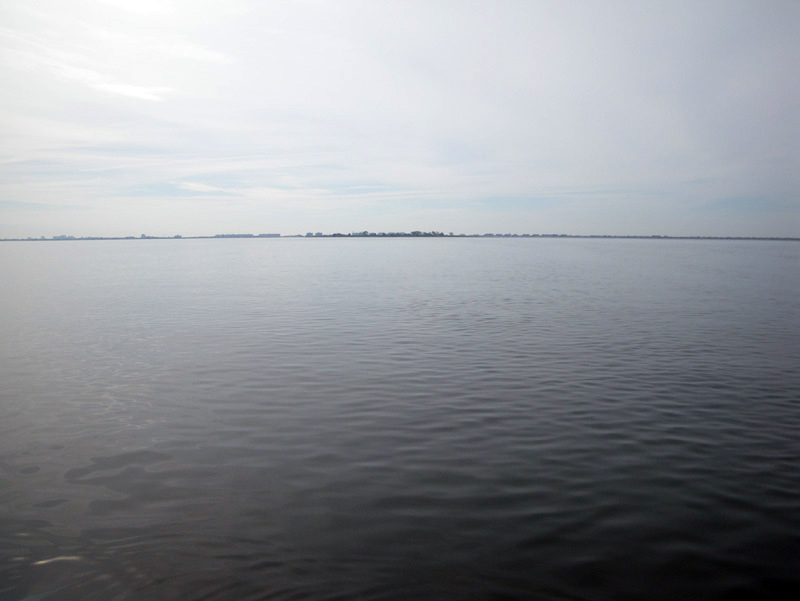
Back out in the boat, we decided to paddle up Mill Basin.
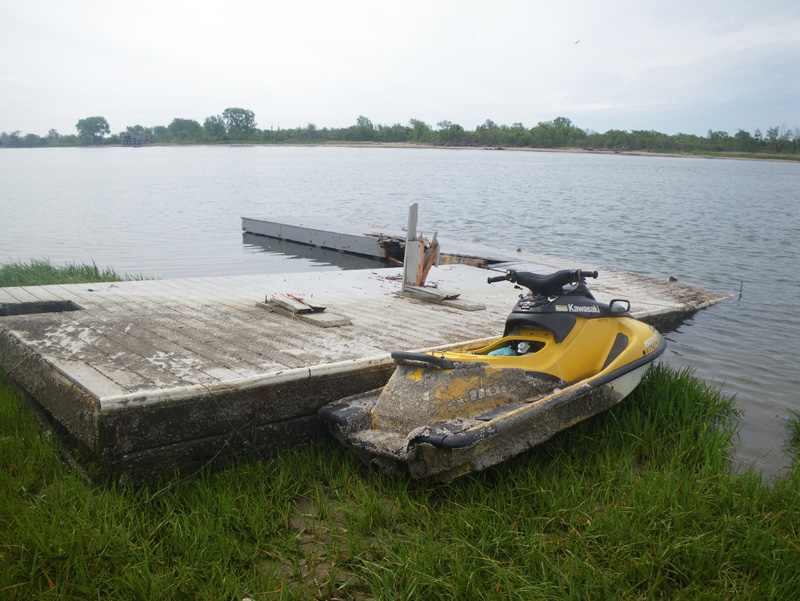
In the channel there were large docks that had been ripped away from homes, some with boats still attached.
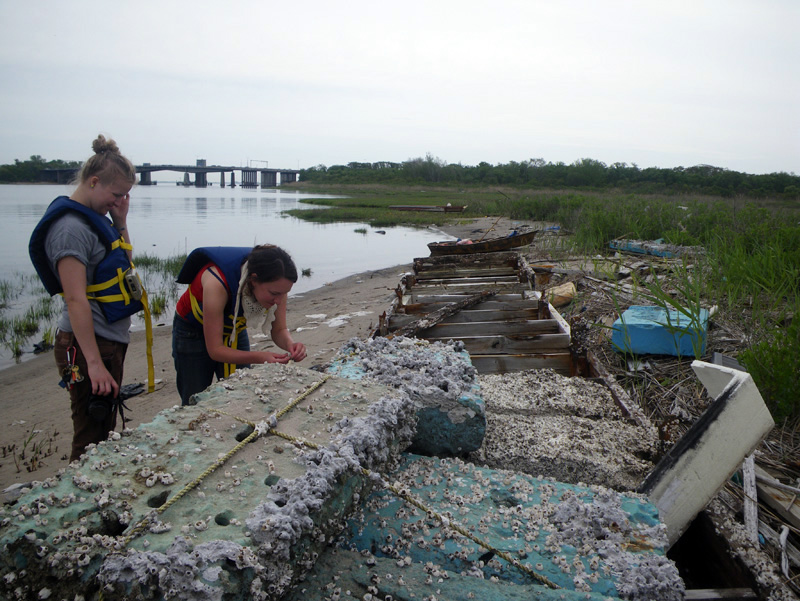
The under sides of things are now on top.
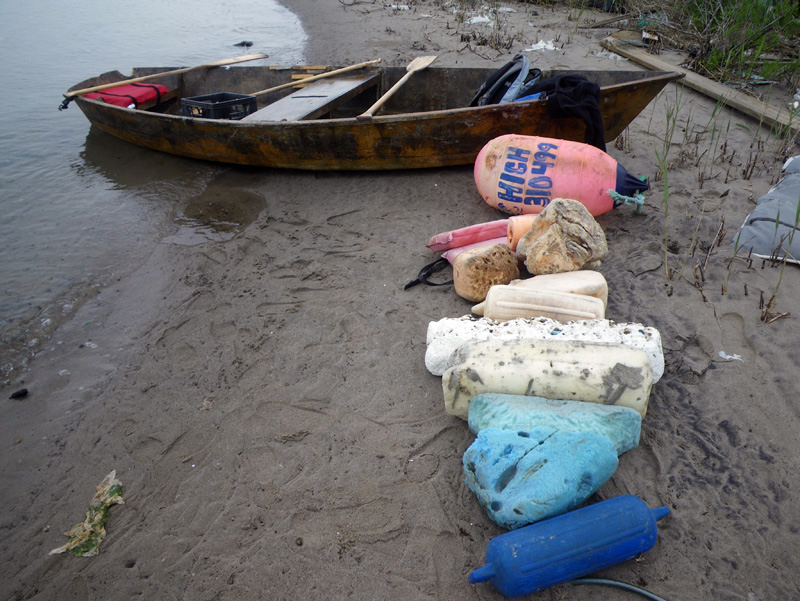
I am used to seeing things ripped away from docks out in the bay,
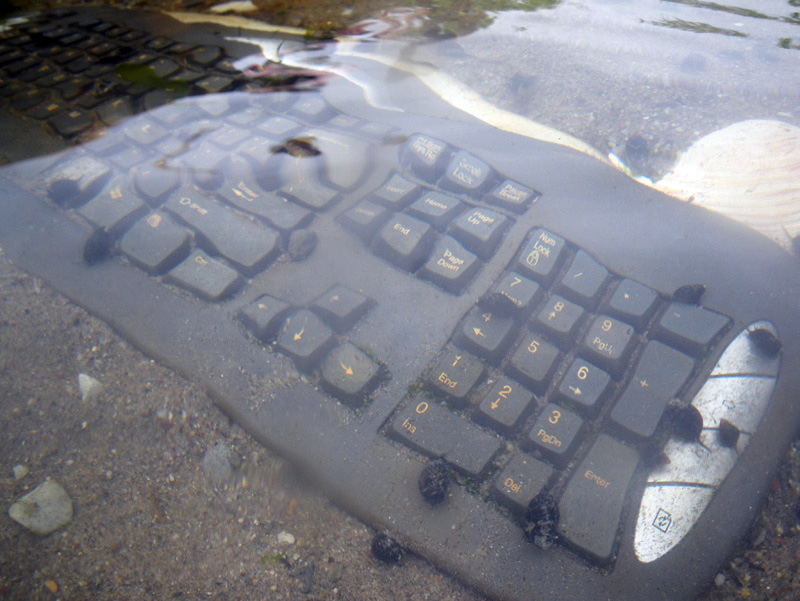
but after Sandy, there are lots of things from people’s houses too.
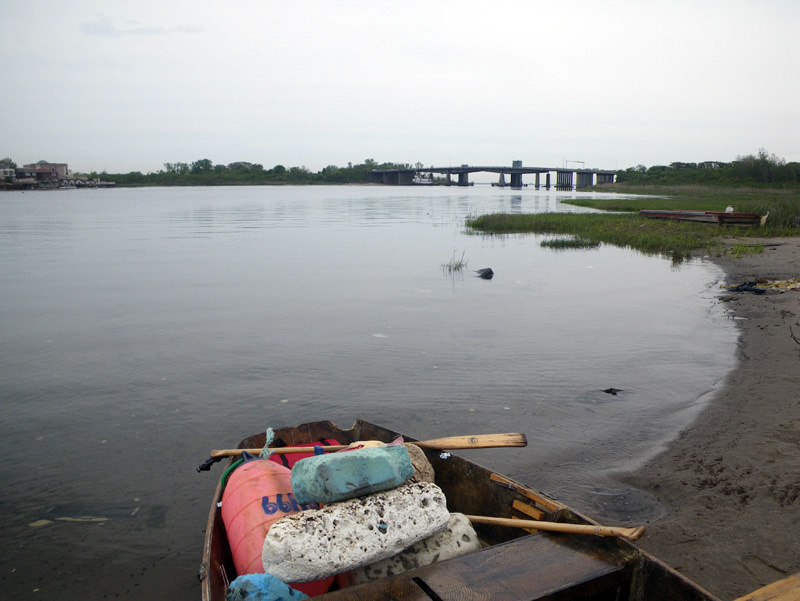
Adrian is writing an article for a magazine about our trip,
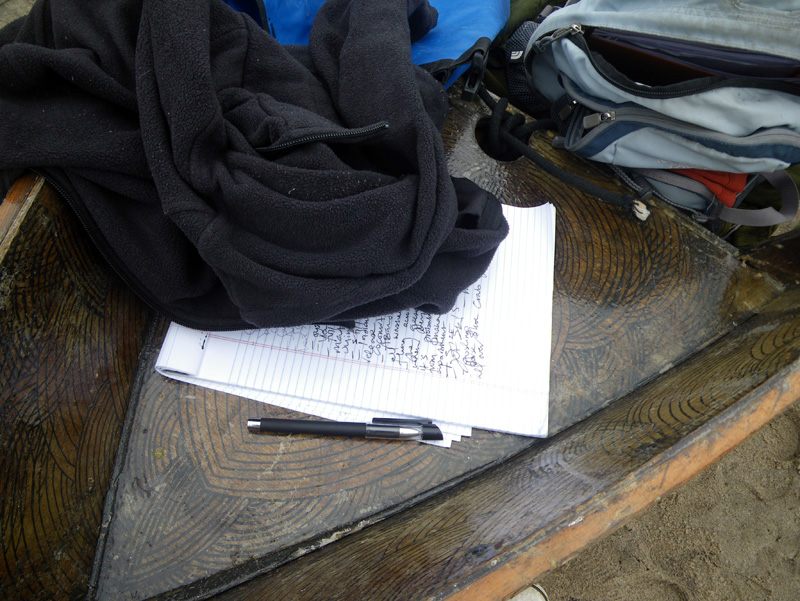
and when I saw her notepad, I wondered how it would seem through someone else’s eyes.
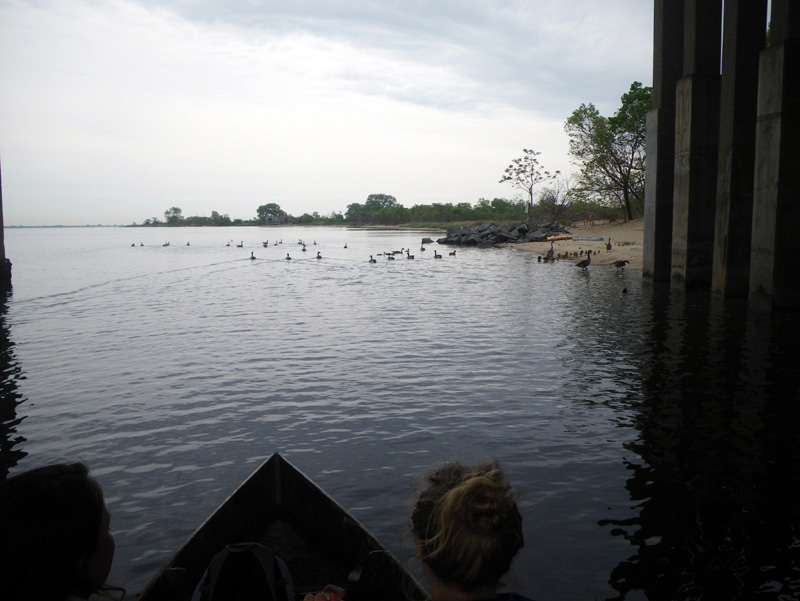
On the way back to the truck, we noticed something.
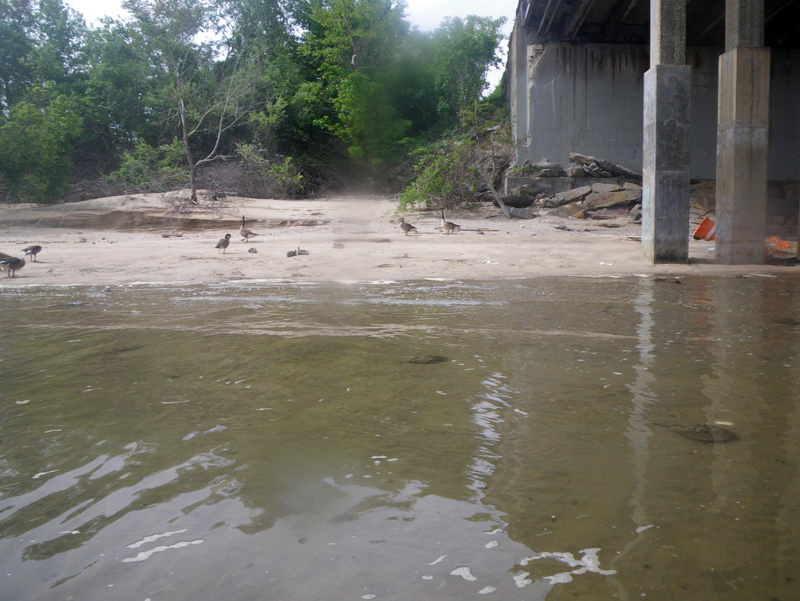
In the shallow water around Barren Island,
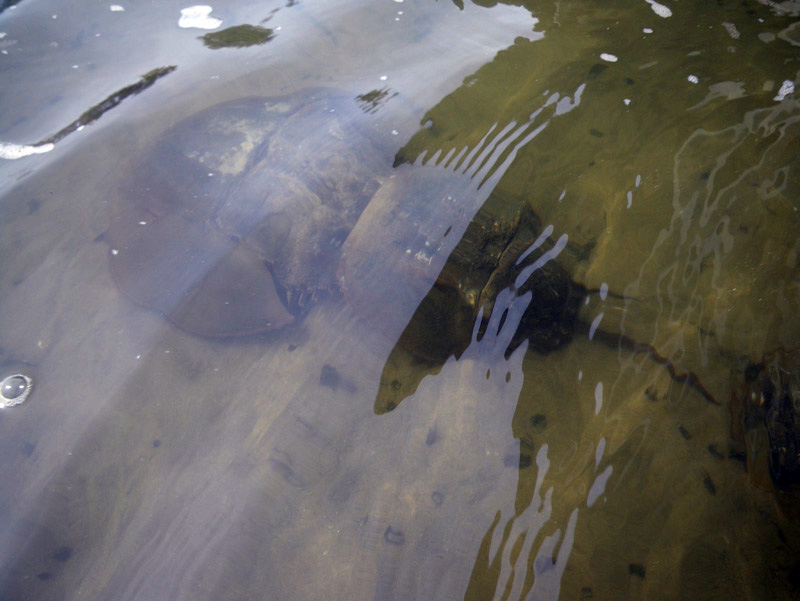
we could see horseshoe crabs moving under the boat.
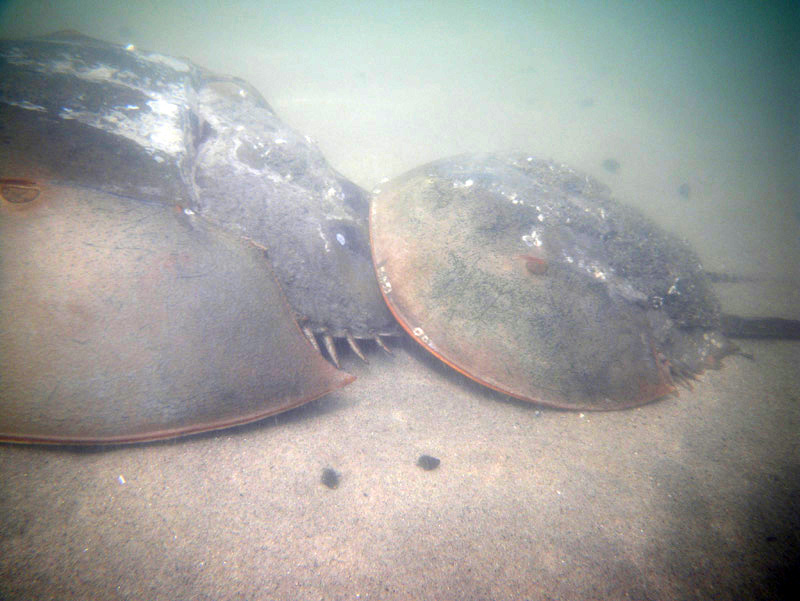
This was the part that we had missed on Canarsie Pol.
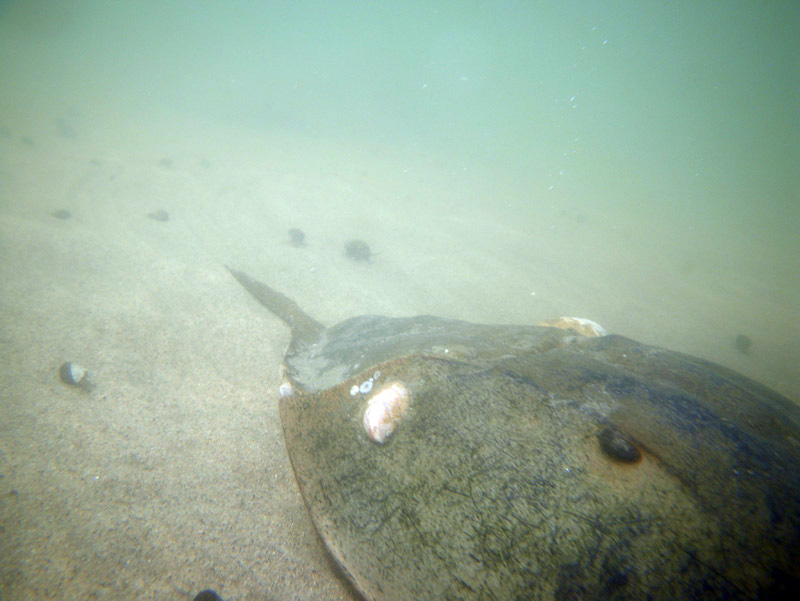
They were so much faster in the water, and it seemed like some of them were coming right for the boat, like they thought it was a giant female horseshoe crab.
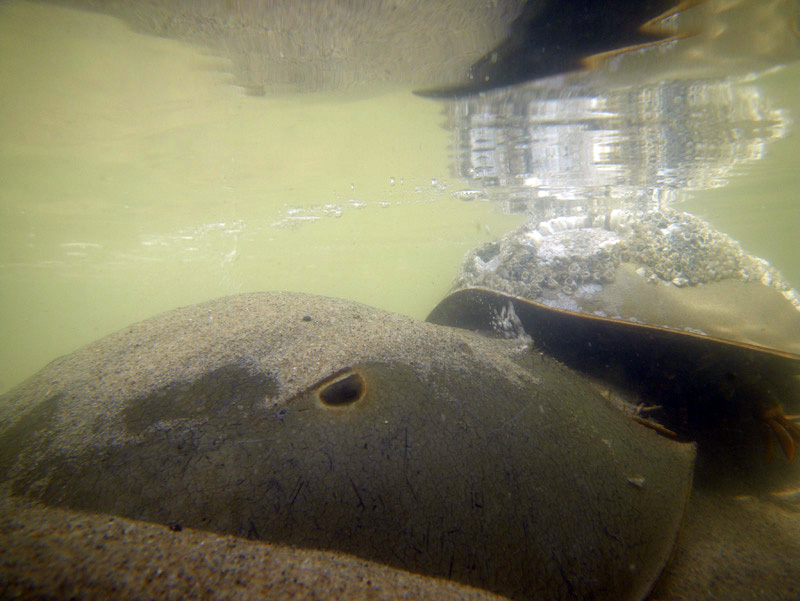
What made this species last so long, unchanged? Was it their tough exterior?
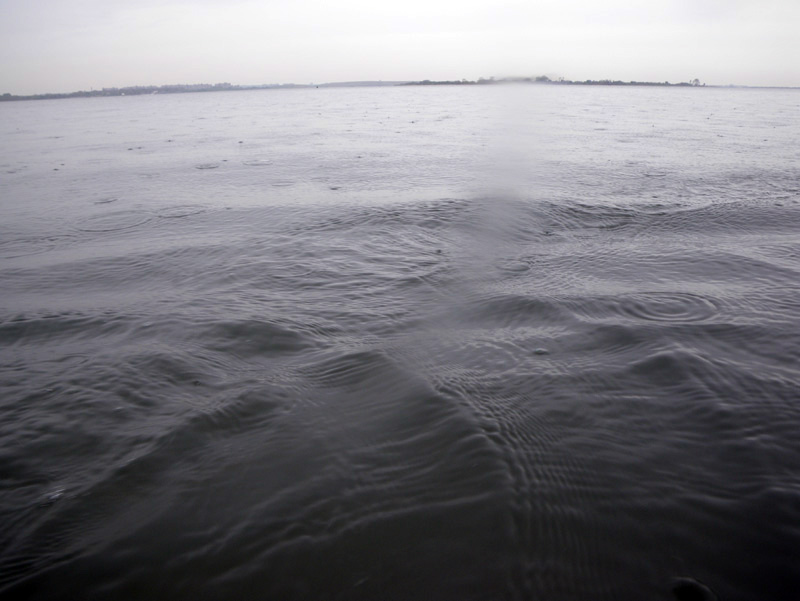
their determination?
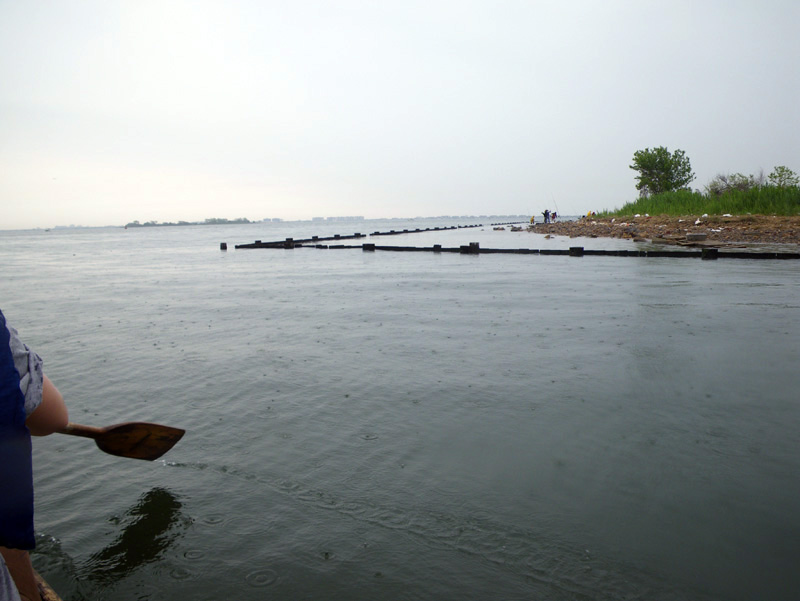
It turned out that Adrian and Cait were students of Samantha Hunt, who came out with me in the boat years ago to this very spot.

“That trip with Samantha was one of my favorite trips in the Tide and Current Taxi.” I told them.
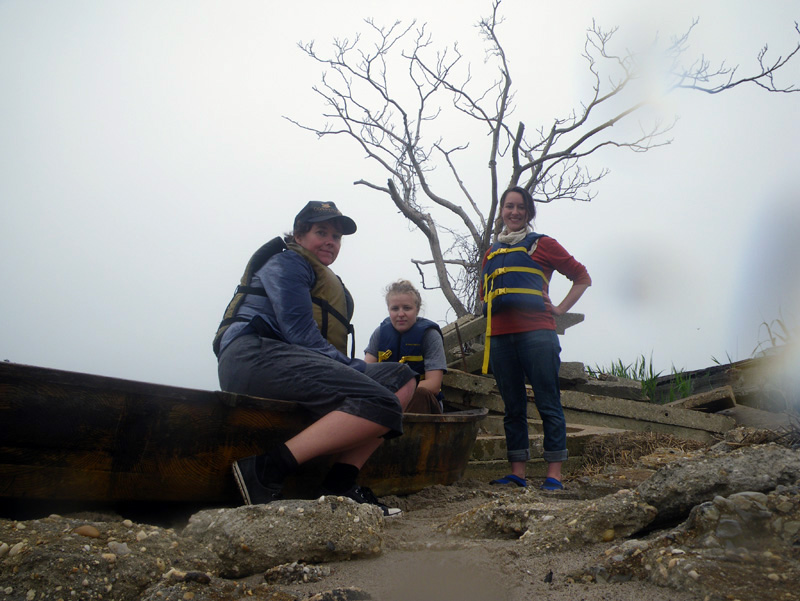
“Despite the rain, this one is pretty good too.” I thought.
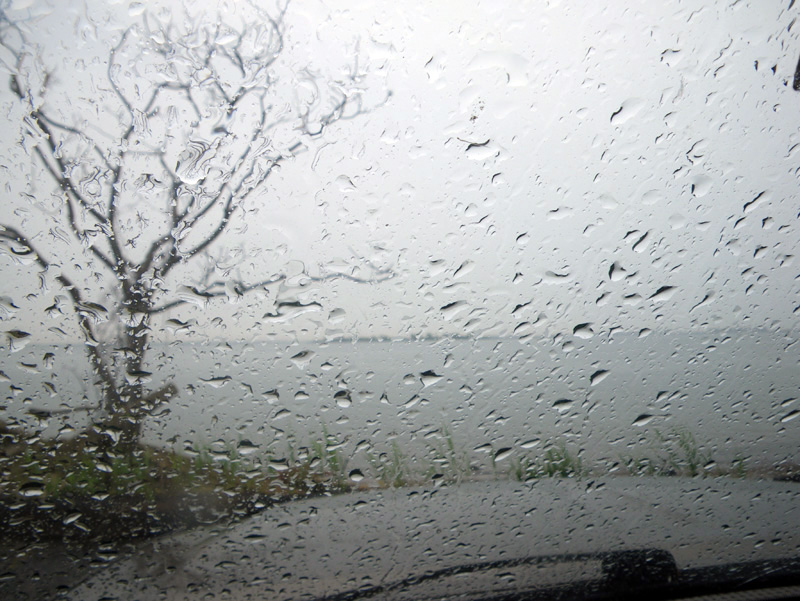
↑ Return to Top of Page ↑